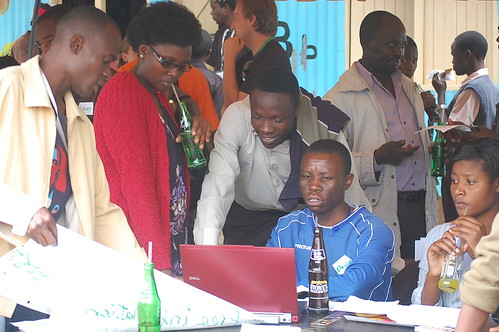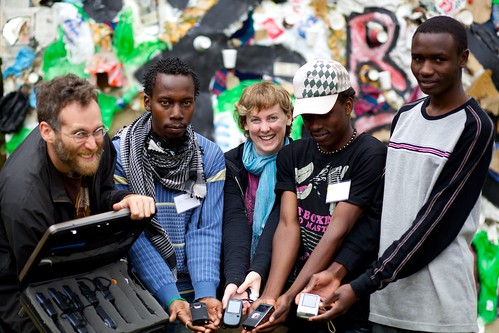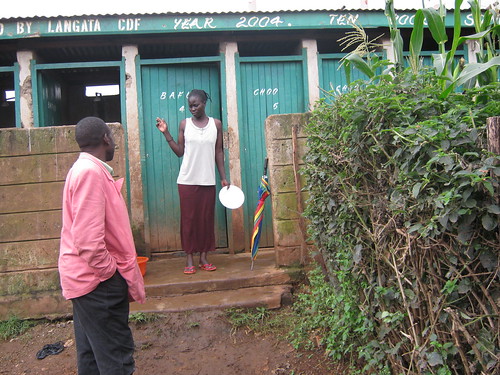August has been awesome. Busy and intense, in a transitional sort of way. We’ve been putting a wrap on mapping in Kibera (for now) and planning the first replication to Mathare. And along the way, getting out, doing stuff, meeting people. Here’s a shotgun of August.
Getting Out
TedX
Regynnah has been speaking on Map Kibera, and Sande on Voice of Kibera, and TedX tours four informal settlements throughout Nairobi. It’s a great idea to make connections between these areas, they have more in common than not, and can learn and build with each other.
Maker Faire Africa
Kibera News Network came out in force to contribute to the fun house that is Maker Faire Africa. Gratifying to see lots of existing knowledge and interest in Map Kibera and OpenStreetMap.
Mukuru
Primoz helped Millicent and Kevin lead a 2 day mapping party (plus 2 day follow up) with mappers in Mukuru. These guys have been working with Partnership for an HIV-free Generation and Emory University, and had previously done some paper based mapping. Super enthusiastic group, opens the door to more work there.
Getting Recognized
Youth Fund
Map Kibera was awarded a grant by the UN Habitat Youth Fund! The group now has support to directly and independently replicate in another Nairobi informal settlement, sometime next year. We’ll have more to say on this later on.
Ars Electronica
And we were awarded Distinction by the Ars Electronica Festival, in Digital Communities category! Should be even more wild than Maker Faire.
Robert Chambers and Mark Hamnolan
Kibera News Network has been going strong, producing high quality reporting, during the Referendum and otherwise. This weekend, they had a visit from Professor Robert Chambers, a pioneer in participatory approaches to development. And Mark Hamnolan is here, working with KNN to interview Kiberians about crisis for a Red Cross project, and generally share some skills.
Wrapping Up
Water/Sanitation is wrap
We finally finished editing on the final theme of “phase 2” of Map Kibera, Water and Sanitation. We held a community map drawing meeting at the offices of KWAHO, attended by many professionals from the watsan network of Kibera. The discussion was extremely interesting, and opened up many possibilities for application of maps and other tools for their work.
We’ll continue to engage in Kibera, to figure out how the map can live and benefit this and other core issues.
Put a bow on it
With help from Meghana, we’re redesigning the Map Kibera site to present everything we’ve learned over the past 6 months. Luckily we’re in good hands.
On the mapping side itself, Eric Brelsford has been rationalizing the crazy tags that evolved out of mapping the kind of place completely new to OpenStreetMap. He’s looking at improving the rendering for each theme, in seperate layers, and may be getting some help from a certain large company that’s recently taken a big interest in OSM.
On the printing side, we’re nearly through the design process for the posters and atlas. Primoz and Emma have been working hard translating the mass of digital information to paper. These will be printed up in the hundreds and distributed to organizations, schools, etc throughout Kibera.
Apps4Africa
I’m mentoring two projects in Apps4Africa. I’ll have more to say on those soon.
Making Plans
Mathare, Rebel Film Board, PLAN CLTS
In Mathare, we’ve been greeted with lots of enthusiasm when presenting to the Rebel Film Board, and the Community Total Led Sanitation network. There’s many more groups and people who are welcoming us to Mathare. The ground work is being set for our next steps there. PLAN International is also coming on board to support.
Strategic Thinking
In the rest of our free time, we’ve been taking a look to the long term. How do we carefully build on the successes in Kibera, and bring the benefit of these tools to new communities? Will be interesting for sure.





